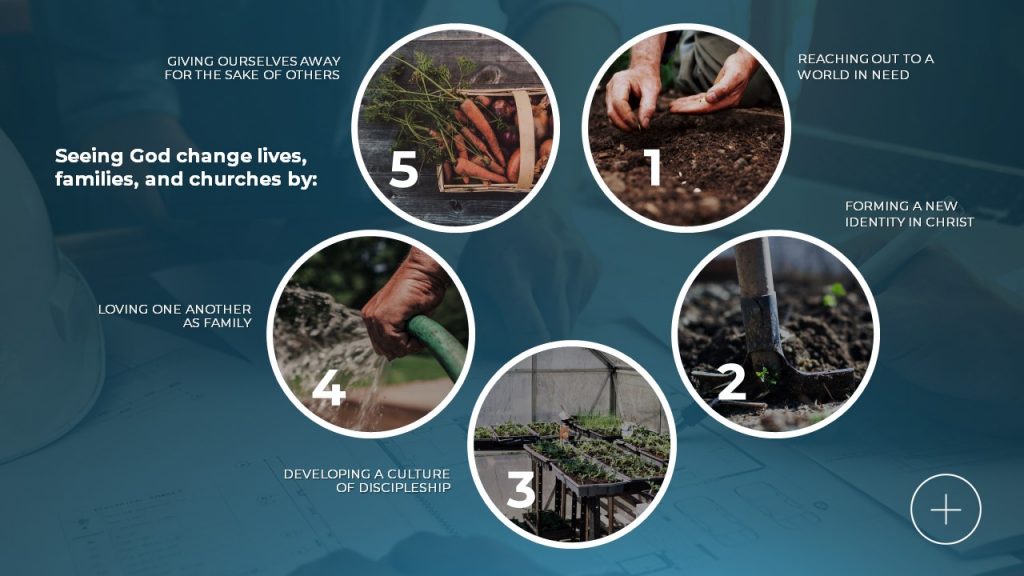A vision without a strategy is a pipedream
In recent months, in anticipation of restrictions coming to an end and us being able to express our faith and worship in more usual ways once again, I have been reminding us as a church family of our shared vision as a way of building momentum and uniting us together as we return.
Over the next few weeks, I want to share with you 5 strategic areas that will shape our life together as we seek to fulfil our mission and our vision to see God change lives, families, and churches.
Over the next few years, I want us to focus our energy on drawing people into intentional apprenticeship to Jesus by:
- reaching out to a world in need,
- drawing people into a new identity in Christ,
- developing a culture of discipleship,
- loving one another as family and
- giving ourselves away for the sake of others.
I call this our Discipleship Pathway andtogether each of the 5 parts of the journey are crucial if we are to be successful in our ambition.
I am excited to be sharing this with you because the greater clarity we have together about what we are about as a church, the greater the energy and enthusiasm we will all have for being involved in it all as we each find our place in the wider story of God’s action in the world.
The reasons for why and how we do things are complex and they are shaped by our context and our experience. The same is true for all that follows which is shaped by my experience and reflection over the last 30 years and is also a response to our specific context for mission here in Reigate in 2021.
A growing focus
It is now commonplace for businesses, charities, and voluntary organisations to have vision, mission, and strategy statements as ways of helping them to clarify their core purpose.
- A vision is our forward-looking starting point – it establishes where we want to be in the future and why it matters.
- A mission statement captures, at a high level, what we will do to realise our vision.
- And strategy lays out the goals, big themes of work, and our approach that will help us achieve both the vision and mission – how we will get there.
Here at St Mary’s, we want to see the good news about Jesus’ impact and change the lives of hundreds of individuals and families, and we long to be used by God to bring renewal, encouragement and life to other churches and ministries as God leads us.
We know that God loves our neighbours, friends, colleagues and family members and his plan is for each of them to receive new life through a restored relationship with him through Jesus.
We believe that God is determined to rescue his world from everything that has spoiled and disfigured it and we pray for his kingdom to come, his will to be done, on earth as it is in heaven.
And that’s why our vision to see God changing lives, families, and churches, again and again.
To see this happen we know that Jesus commissions us to go and make disciples – intentional apprentices – who have Jesus and his kingdom at the centre of their lives. God chooses us, despite our vulnerabilities and weaknesses, to be involved in his world-wide renewal programme by introducing others to Jesus so that they might live in him and express his rule through their lives. And we want to play our part in this remarkable story of transformation.
And that is why you will hear me say so often, that our mission is to make whole-life disciples of all ages; to grow communities of people who worship God with their whole lives; and to model and reproduce this as widely as possible.
Our main task is to make disciple-making disciples and as a leadership we are determined to pull all the resources we have at our disposal to fulfil this discipleship vision as we are led by the Spirit and empowered through prayer.
Our Strategy
All of which leads us to our strategy. How will we do this over the next few years? It’s important to know. How can we shape our church life together so that it naturally and routinely produces the results that we are looking for? What processes must we implement to increase the likelihood of us achieving our goal?
There are five key ways, as we each embark on our own continued discipleship pathway, that we will make disciples:
- Reaching out to a world in need
- Drawing people into a new identity in Christ,
- Developing a culture of discipleship,
- Loving one another as family and
- Giving ourselves away for the sake of others.

Over the course of the next few weeks I will be posting something on each of these 5 things, of the which the first one is ‘Reaching out to a world in need”



